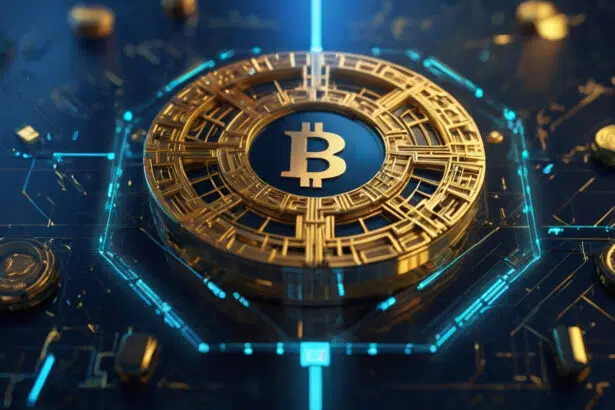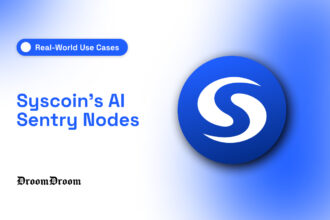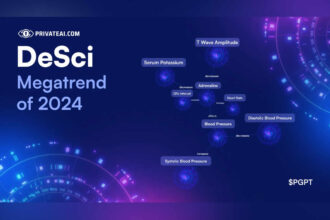Gas fees, a cornerstone of Ethereum’s infrastructure, have served as a double-edged sword as it is both a catalyst for innovation and a potential barrier to entry.
- Understanding Gas Fees and Their Impact
- The Emergence of Gasless Trading
- How is Gasless Trading Implemented?
- Meta-Transactions
- Layer 2 Scaling Solutions
- Relayers and Gas Abstraction
- Subsidizing Gas Fees & Tokenomics
- Benefits of Gasless Trading for the DeFi Ecosystem
- 1. Lower Barriers to Entry
- 2. Enhanced User Retention
- 3. Increased Transaction Volume
- 4. Innovation Enablement
- Conclusion
As DeFi grew, particularly during 2020’s “DeFi Summer,” gas fees became a topic of huge concern, with users expressing frustration over the high costs. For example, during the 2021 NFT boom, gas prices surged again due to the influx of NFT transactions.
Then the scaling challenges faced by Ethereum led to the development of Layer 2 solutions and other innovations to reduce the burden of gas fees. But it was the introduction of gasless trading that promised the most unimaginable change by entirely eliminating gas fees for end-users in certain scenarios.
Gasless trading is important because it removes one of the most incredible barriers to DeFi adoption–cost. For many users, the need to pay gas fees has created financial and technical barriers, particularly when these fees fluctuate based on network demand. By eliminating gas fees, DeFi becomes more inclusive, for users of all backgrounds to participate, regardless of the amount of crypto they hold.
This article will get into the concept of gasless trading, explain how it works, and provide a detailed case study of LogX Network, which has successfully implemented gasless trading solutions.
Understanding Gas Fees and Their Impact
To fully grasp the importance of gasless trading, it only makes sense to understand the role gas fees play in blockchain networks, particularly Ethereum.
Gas fees are essentially transaction fees that users must pay to execute operations on the network. These fees compensate miners for the computational effort required to process transactions and the cost can fluctuate tremendously based on network congestion.
For example, during periods of heavy network traffic, gas fees on Ethereum have surged, making simple transactions prohibitively expensive. At the peak of the DeFi boom in 2020, gas fees skyrocketed to as much as $50 per transaction on the Ethereum network.
High transaction costs can discourage users, particularly those making small-value transactions, from participating in DeFi.
Gasless trading—
- Improves accessibility by allowing users to engage in DeFi without needing to first purchase native tokens to pay for gas.
- Brings user experience to a higher level by eliminating the uncertainty of fluctuating gas costs which makes the platform more attractive for day-to-day use.
- Encourages frequent trading and liquidity, as users are no longer discouraged by high transaction costs.
The Emergence of Gasless Trading
In traditional DeFi platforms, users must hold the network’s native cryptocurrency (e.g., Ether on Ethereum) to cover gas fees for each transaction.
Gasless trading, however, shifts the burden of these fees to another entity, such as a relayer or the platform itself. This enables a smoother and more cost-efficient user experience.
How is Gasless Trading Implemented?
Gasless trading is powered by innovative technologies and strategies that remove the need for users to pay transaction fees directly. Now we explore the key mechanisms behind gasless transactions and how platforms like LogX have successfully integrated them to provide a smooth user experience.
Meta-Transactions
Meta-transactions involve a user signing the transaction data, which is then submitted to the blockchain by a third-party relayer who pays the gas fees. This method allows users to bypass the need for native tokens like Ether, as the relayer handles the gas.
LogX implements relayers to cover these gas fees and is compensated through the platform’s tokenomics model.
Layer 2 Scaling Solutions
Layer 2 networks, including Optimism and Arbitrum, help reduce gas fees by processing transactions off the Ethereum main chain.
DeFi Superapp LogX, which uses the Arbitrum Orbit Stack, takes full advantage of this scaling technology to offer fast, cost-effective trades with minimal gas fees. It makes sure that transactions on LogX can be processed efficiently even during periods of network congestion.
Also it should be mentioned that Hyperlane and AltLayer in LogX provide cross-chain interoperability for assets to move seamlessly between different blockchain networks. This ensures that gasless trading is not confined to a single blockchain and users have access to a wider range of DeFi markets without worrying about gas costs across networks.
Relayers and Gas Abstraction
Relayer networks abstract the gas fee process. LogX employs relayers who cover the gas fees on behalf of users, removing the need for users to directly pay gas fees. The relayers are compensated through $LOGX token staking and transaction fees, ensuring that the platform can maintain gasless services while incentivizing relayers to continue providing liquidity for transactions.
Subsidizing Gas Fees & Tokenomics
One approach for platforms is to subsidize gas fees, covering the transaction costs themselves. Another option is to leverage external partnerships with liquidity providers or other DeFi platforms, who may be willing to subsidize gas fees to attract more users.
An example of LogX’s gasless trading strategy is its native token, $LOGX. By staking $LOGX tokens, users are entitled to a 100% gas subsidy. Meaning that all their transactions on the platform are gasless. This staking mechanism not only encourages user participation but also ensures that the platform can sustain its gasless model in the long term.
Beyond this, LogX employs a revenue-sharing model, wherein a portion of the platform’s earnings from trading fees is used to subsidize gas fees. This model helps to offset the cost of maintaining the gasless system, allowing the platform to scale while keeping transaction costs low for users.
Benefits of Gasless Trading for the DeFi Ecosystem
The introduction of gasless trading has provided a transformative advantage to the DeFi ecosystem, enhancing accessibility, user retention, and transaction volume while fueling further innovation—
1. Lower Barriers to Entry
Before gasless trading, entering the DeFi space required users to acquire the native cryptocurrency of the network, such as Ether (ETH) on Ethereum, to cover transaction costs (gas fees).
For newcomers, this added an extra layer of complexity that involved both technical understanding and financial costs.
Gasless trading completely removes this barrier. By eliminating the need for users to hold native tokens to cover gas fees, platforms offering gasless transactions significantly simplify the onboarding process.
2. Enhanced User Retention
A seamless and intuitive user experience is essential for retaining users, particularly in the fiercely competitive DeFi market. Gasless transactions significantly reduce the need for constant wallet confirmations or fee calculations, creating a smoother interaction.
Platforms offering gasless trading, such as LogX, remove one of the key friction points—transaction fees. Without gas fees, users enjoy a CEX-like experience, where they can execute transactions without worrying about fluctuating costs.
3. Increased Transaction Volume
One of the most direct benefits of gasless trading is the increase in transaction volume.
When users are not concerned about the costs of each transaction, they are far more likely to engage in more frequent trades. This directly contributes to higher liquidity across platforms and generates greater economic activity within the DeFi space.
For example LogX has seen significant growth in transaction volume with over $20 billion in trading volume and more than 3 million transactions processed.
4. Innovation Enablement
Previously, the high costs associated with gas fees posed an obstacle to developing applications that rely on microtransactions or low-value transfers, as the fees could outweigh the transaction value itself.
Gasless trading enables the development of innovative use cases that were previously economically unfeasible, such as—
- Gaming applications that require frequent, small in-game transactions.
- IoT integrations, where devices can autonomously execute transactions on a blockchain.
- Microfinance solutions, enabling smaller, more frequent transfers of assets in emerging markets.
Conclusion
Gasless trading is making DeFi more accessible, efficient, and user-friendly. By removing the friction caused by fluctuating gas fees, platforms like LogX are setting a new standard for seamless trading experiences.
LogX’s innovative use of relayers, Layer 2 scaling solutions, and cross-chain interoperability exemplifies how gasless trading can enhance user experience while driving growth in transaction volume and liquidity.



















